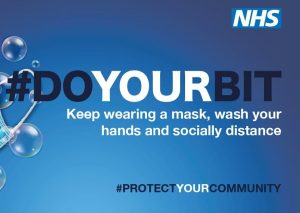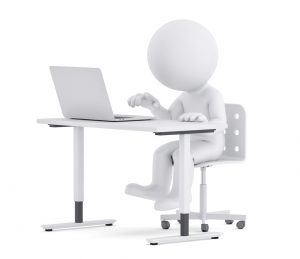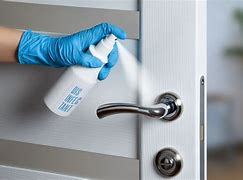
Coronavirus has created the most challenging and difficult time for us all
With the Government confirming that face coverings will no longer be compulsory in shops, hospitality and on public transport in England from 19 July 2021, employers will be asking what this means for them.
From 19 July 2021, there will be a shift by the Government from instructing us all to follow strict rules to a greater emphasis on individuals making their own decisions on what steps they feel they should be taking to keep themselves safe. This shift of responsibility gives employers more flexibility when it comes to deciding whether to require staff to continue wearing face coverings in the workplace but also leaves employers with a difficult decision to make.
The Government will provide guidance on where individuals may still choose to wear a face covering, for example in places where they come into contact with those who are outside of their bubble. However, ultimately, in the workplace the decision will be left to the employer.
As an employer, your duty of care to safeguard the health, safety and wellbeing of your employees does not change because the Government states that people no longer have to wear face coverings. When making their decision, employers should consider the nature of the workforce and listen to individual concerns. There are likely to be some employees who will be relieved to not have to wear face coverings; however, as they are worn to protect people around an individual, rather than the wearers themselves, there are also likely to be a number of employees who are concerned about the implications of not wearing one. Furthermore, you may have younger staff who have not had the opportunity to be fully vaccinated, or vulnerable/extremely vulnerable staff who are concerned about colleagues not wearing face coverings.
The organisation should review its Covid risk assessments in view of the changes. This will help you decide on which controls, such as the continued use of face coverings, might need to be retained. You can then update your policy on face coverings in the workplace and communicate it to all staff, so employees know where they stand. If you decide to make face coverings mandatory in the workplace, remember that some employees may continue to be exempt.
Alternatively, your policy may be that face coverings are no longer required but staff can wear a face covering if they want to, or that face coverings are required only in certain circumstances, such as meetings over a certain size, etc.
Be prepared that you may receive some resistance from whichever group has not achieved their preferred outcome. Employees should be expected to comply with workplace rules set by the employer. However, to manage any such resistance, listen to individual circumstances and explain how these have been taken into account in your risk assessments.
Bear in mind that it is not just in the actual workplace that employees may be concerned; public transport may be a worry to some employees if others are no longer wearing face coverings, especially at peak travel times.
There are various measures that you can consider from a HR and health and safety point of view to help make employees feel more comfortable with the transition to a face covering free workplace.
From 19 July 2021, it will be the employer’s choice whether to require employees to wear face coverings in the workplace or not. This will be a difficult decision for many employers trying to balance the individual circumstances of the workforce.
Whichever route the employer decides to take is likely to meet with some resistance from one group or another. Make sure you listen to employee concerns and redo your workplace coronavirus risk assessment. Review this regularly to ensure your risk control measures are working as expected. Have a clear, reasonable policy and be prepared to justify your approach.
Contact us if you require further information.

Employees who can’t (or won’t) return to work
The COVID-19 pandemic has meant drastic changes for the UK’s workplaces, including three lockdowns, many social restrictions and government advice that people should only leave home to attend work if they “cannot reasonably work from home”. While everyone is still advised to continue to work from home where possible, if that’s not possible, they’re now able to attend the workplace. And as the UK begins its phased emergence from lockdown, employers will now begin the process of returning some (or all) of their people back into the workplace. As this return to work begins, you might find some of your employees might be resistant to the idea of returning to the workplace. So, it’s vital to know where you stand as an employer if an employee is refusing to return.
As a first step, you should carry out risk assessments for the workplace/job roles/ individuals (where appropriate, e.g., because the employee is pregnant or clinically vulnerable). You should then put into place all reasonable and necessary measures and confirm to the employees that the workplace has passed this COVID risk assessment. This will help reassure them that the workplace is safe. It is important to share your risk assessment and details of the measures you have implemented with them. Remember… it’s your responsibility as an employer to make sure that your workplace is COVID-compliant and stays that way. This will play a huge role in giving your people increased confidence that they’re returning to as safe an environment as possible. Plus, you could be liable for a fine of up to £10,000 if your workplace is found to be in breach of COVID-secure rules.
The key to approaching returning an employee to the workplace is communication – understanding their concerns and discussing the needs of the business whilst offering support where you can. Last summer the government called for employers to consult closely with their employees about returning to work and this will be equally important as we emerge from the current lockdown. If, despite the reassurances, you find the employee resisting the request to return to work, the next stage would be to have a conversation and find out exactly why they are opposing the request.
It may be that an employee simply prefers to work from home. They could even submit a formal flexible working request to work from home (as long as they have over six months’ service). Therefore, it’s worth clearly setting out from the beginning why you want them to return to the workplace so that they understand the business reasons for this. It may be because you think they can do their work more efficiently or effectively there. It’s worth considering the following:
It’s important to make sure you communicate clearly to the employee why you’re refusing the request, so they fully understand the business reasoning behind the refusal. If they then put in a formal flexible working request, you should make sure you deal with this properly using the correct procedures.
As of 1 April, the government officially paused shielding, although clinically extremely vulnerable people are advised to continue to take extra precautions to protect themselves. Before asking a (previously) shielding employee to return to work, you should first carry out an individual risk assessment to make sure it’s safe for them to return. This is also necessary to help reassure them that their safety is a top priority. If it isn’t assessed as safe at this stage to ask them to return to the workplace, then you could potentially keep them on furlough or ask them to continue working from home. If you do assess the workplace as safe, then you should speak to the employee and demonstrate to them that you have introduced the necessary measures to keep them safe. You should ask them to outline exactly what they feel nervous about and how you have addressed these areas. If the workplace is safe and you do need them to return, then you may need to take formal steps to require them back to work. However, this would need delicate handling and individual advice about the particular case. Cluer HR could advise further.
This IOSH Approved Returning to Work course helps employees transition back to work in light of COVID-19; whether they have been working from home for an extended period or after being furloughed. It covers things that can be considered before returning, and it also looks at what you can expect on their first few days and weeks back at work. This course will take just 25 minutes to complete, and each user will be given a certificate upon course completion.
If you have any queries, please contact us.

Cleaning the premises after a COVID case
We are aware of the need to clean and disinfect the workplace after learning of a worker with Covid symptoms or confirmed coronavirus. There is guidance on how this should be undertaken from a health and safety perspective.
The UK Government guidance notes the need to undertake cleaning and disinfection following an occasion when an individual has symptoms or confirmed coronavirus and has left the premises.
Guidance notes that:
It is advisable that, as part of outbreak contingency planning, the employer has a plan in place to enable appropriate cleaning to be undertaken. A process should be put in place that enables appropriate persons to be informed of the circumstances when cleaning is required and has the authority to put the plan into place.
In terms of practical matters, the following should be considered:
There will need to be some form of dynamic risk assessing required as the operations will need to take into account the actual areas involved. This will require some investigative work to ascertain where the person with symptoms/confirmed Covid has been.
Again the employer should be considering where responsibility for this rests within the organisation.
Where the cleaning operations have been outsourced to a third party it is essential the organisation works with the cleaning provider to ensure all parties are fully conversant with the procedures to be followed.
To assist in developing appropriate procedures, the British Institute of Cleaning Science (BICSc) have produced a guidance document Standard Operating Procedure: Outbreak Decontamination Cleaning.
This guidance can be used as a framework to develop an organisation-specific procedure.
Contact us should you require further information.

Businesses should be aware of a scam email which is being circulated. The email is signed by someone identified as Mark J. Burrows, is targeting UK businesses, and claims that the HSE will soon be visiting the email recipient’s premises for a COVID-19 check. The email urges the recipient to follow the guidance provided through a link in the email.
Example email which was received by a client.
| Health and safety spot checks and inspections during coronavirus (COVID-19) The Health and Safety Executive is carrying out spot checks and inspections on all types of businesses in all areas to ensure they are COVID-secure. We are making calls so we can give expert advice on how to manage the risks and protect workers, customers and visitors. We are also working closely with local authorities, assisting them in the sectors they regulate such as hospitality and retail. By calling and visiting premises and speaking directly to employers, we can check the measures they’ve put in place are in line with government guidance. Inspectors will make COVID-secure checks as part of their normal role in visiting workplaces during the pandemic. To ensure we reach as many workplaces as possible nationally and support the core work of our inspectors, we are working with trained and approved partners to deliver the spot check calls and visits. We are planning to visit (spot check) your premises: 9 AM, 19/03/2021 Please follow the guidance to find the required documents. This is legal requirement. Yours sincerely, Mark J. Burrows HSE Manager Health and Safety Executive |
If you get this email, please delete it. Do not click on the attachments. If you belong to an organisation with multiple employees, please ensure all of them are aware of this type of email scam, and that they understand the risks associated with downloading files that they were directed to after receiving unexpected or unsolicited emails.
If you would like an audit, contact us.
Contact us if you require further information.